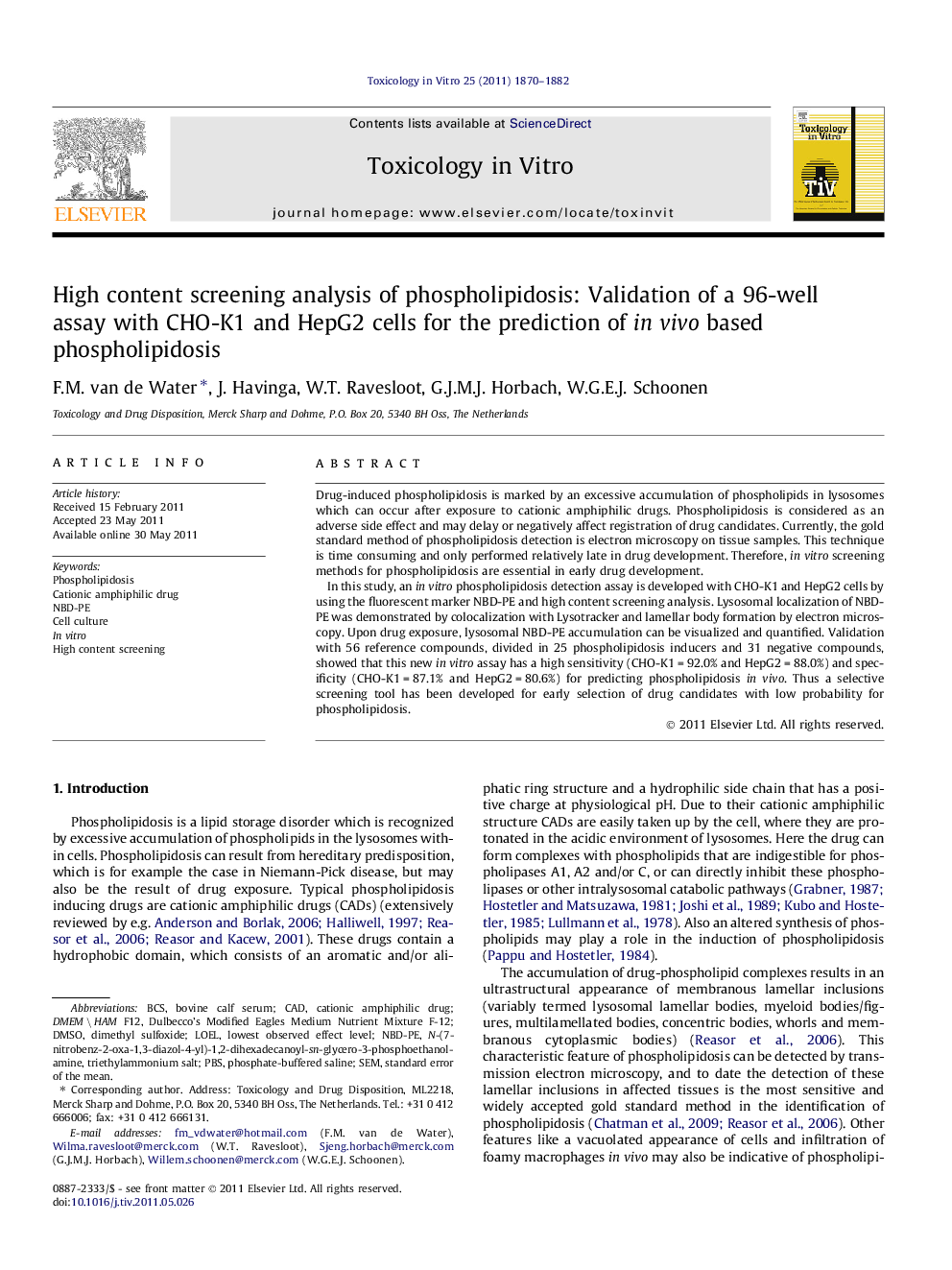| Article ID | Journal | Published Year | Pages | File Type |
|---|---|---|---|---|
| 5862680 | Toxicology in Vitro | 2011 | 13 Pages |
Drug-induced phospholipidosis is marked by an excessive accumulation of phospholipids in lysosomes which can occur after exposure to cationic amphiphilic drugs. Phospholipidosis is considered as an adverse side effect and may delay or negatively affect registration of drug candidates. Currently, the gold standard method of phospholipidosis detection is electron microscopy on tissue samples. This technique is time consuming and only performed relatively late in drug development. Therefore, in vitro screening methods for phospholipidosis are essential in early drug development.In this study, an in vitro phospholipidosis detection assay is developed with CHO-K1 and HepG2 cells by using the fluorescent marker NBD-PE and high content screening analysis. Lysosomal localization of NBD-PE was demonstrated by colocalization with Lysotracker and lamellar body formation by electron microscopy. Upon drug exposure, lysosomal NBD-PE accumulation can be visualized and quantified. Validation with 56 reference compounds, divided in 25 phospholipidosis inducers and 31 negative compounds, showed that this new in vitro assay has a high sensitivity (CHO-K1Â =Â 92.0% and HepG2Â =Â 88.0%) and specificity (CHO-K1Â =Â 87.1% and HepG2Â =Â 80.6%) for predicting phospholipidosis in vivo. Thus a selective screening tool has been developed for early selection of drug candidates with low probability for phospholipidosis.
⺠Drug-induced phospholipidosis (PLD) is considered an adverse side effect. ⺠Early detection of PLD in drug development may prevent a delay of drug registration. ⺠We developed a high content screening method for the early detection of PLD. ⺠In this method, PLD is detected with NBD-PE as a marker in CHO-K1 and HepG2 cells. ⺠Our method has a high sensitivity and specificity for the prediction of PLD in vivo.
